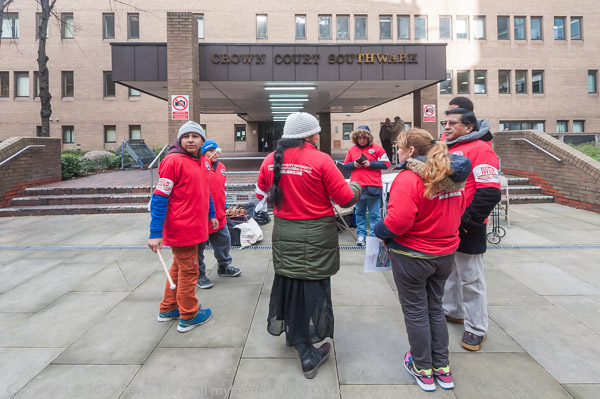
I’ve never been a morning person. Never liked getting out of bed early. Never at my best until after breakfast and perhaps another mug of coffee mid-morning. Hated early mornings when I had to start work for a short while at 8am, and later leaving home to go to work shortly afterwards found it something of a strain. Changed jobs so I could leave a little later and go to work on a bike to avoid travel. Now there is an added incentive against early morning starts, with travel costs to London excessive if I want to arrive before 10am.
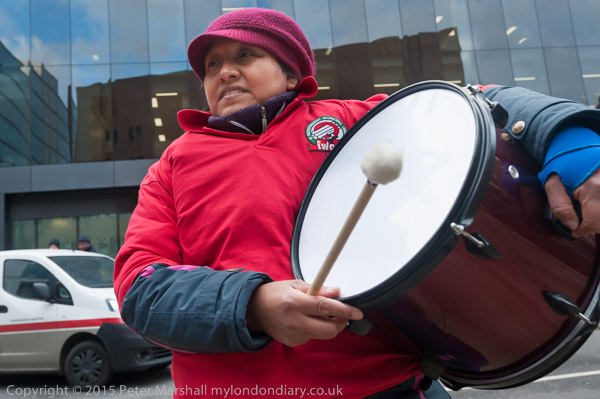
Cleaners don’t normally have the option. Some can’t afford to live anywhere close to where they work in the centre of London, and working at or close to the minimum wage often means they can’t afford tube or rail, but face long bus journeys while most of us are still snoring peacefully. When they go on strike, pickets sometimes start at 6am, though the one outside Southwark Crown Court was a little more civilised 9am. I’d had a few things to do beforehand and only arrived around 1pm, just in time to be handed a box of lunch, which I didn’t really deserve, but ate with thanks before getting down to taking pictures.
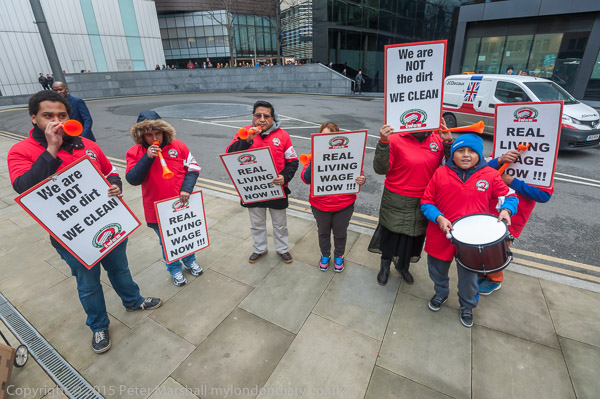
Getting the London Living Wage – then £9.10 rather than the minimum £6.70 per hour that they were being paid to clean the court would make a real difference to these workers. The London Living Wage is an official figure which the GLA thinks is needed to live in London – and currently they were only getting paid less than three-quarters of that. Most cleaners need to do several jobs to keep going, often working 60 hours or more a week.
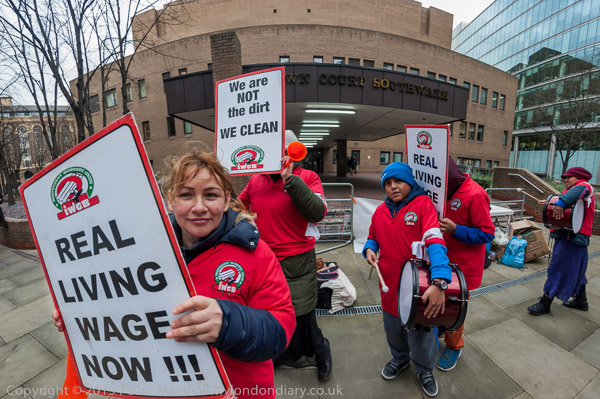
When I was in employment rather than a freelance, I often worked many more hours than I was contracted for, but at least I got a decent wage, if not a very large one. Many people now work a 37.5 hour week; on minimum wage that comes to around £250 a week, £13,000 a year. In June 2015 the average rent in London was £1500 per month, which comes to £18,000 a year.
The cleaners felt let down by the traditional unions who seemed sometimes more concerned with maintaining pay differentials than with improving the lot of those at the bottom of the pile. So they formed their own grass roots unions like the IWGB, grass roots organisations with no paid officials but which have acheived official status as trade unions and have made gains for their members by noisy and assertive actions like this one.
But even where these unions are successful, the successes are sometimes short-lived. Cleaners seldom work for the companies and organisations whose premises they keep clean, but are employed by cleaning contractors. And when contracts come up for renewal, they often go to the lowest bidder – who puts in the lowest bid by cutting wages and increasing workload. And even large companies in the cleaning business seem to be cowboy employers who don’t much care how badly their managers treat staff. These disputes are as much about dignity and respect as they are about wages, vital though these are. ‘We are NOT the dirt we clean’ insist the IWGB posters.
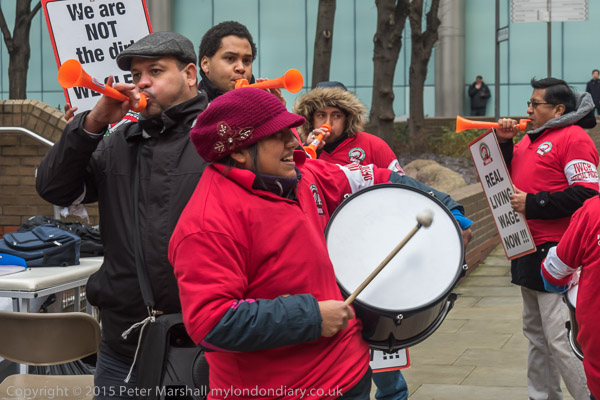
Photographically there was one little problem. The protest was taking place in a rather restricted area, the pavement in front of the court. Photography isn’t permittted inside the grounds of the court, so I couldn’t move back in that direction, and the court is on land owned by a private company, More London, whose secuirity insisted that what looks like a public road in front of the building is private and harassed me when I stepped on it to take pictures, insisting it was not allowed and standing in front of me until I got back on the pavement. There are now many such areas of ‘private’ public space in London and they are growing.
______________________________________________________
There are no adverts on this site and it receives no sponsorship, and I like to keep it that way. But it does take a considerable amount of my time and thought, and if you enjoy reading it, the occasional small donation – perhaps the cost of a beer – would be appreciated.
My London Diary : Buildings of London : River Lea/Lee Valley : London’s Industrial Heritage
All photographs on this and my other sites, unless otherwise stated, are taken by and copyright of Peter Marshall, and are available for reproduction or can be bought as prints.
To order prints or reproduce images
________________________________________________________